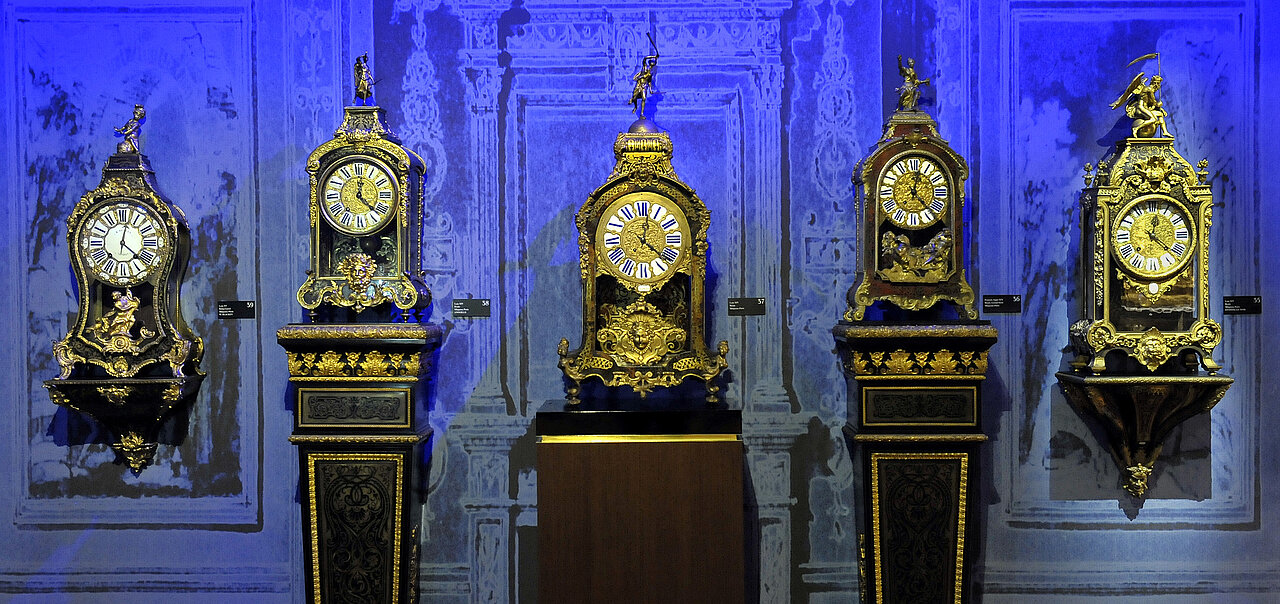
A museum where the great master clockmakers are represented by country, period and style in...
One of the most exceptional collections of european mechanical clocks preserved today. Comprising 287 historic timepieces dating from the seventeenth to the nineteenth century, this ensemble offers a rare opportunity to experience the evolution, artistry, and technical mastery of three centuries of horology.
Remarkably, nearly ninety percent of the collection remains in full working order, allowing visitors to appreciate these clocks not only as decorative masterpieces, but as living mechanisms that continue to measure time with the same elegance envisioned by their original makers.
At the heart of the collection lies a distinguished representation of French Imperial style. These pieces—celebrated for their architectural balance, mythological symbolism, and refined gilded bronze—reflect the cultural ambitions of Napoleon’s era, when craftsmanship and classical inspiration converged in objects of unparalleled grandeur. Alongside the Empire works, visitors will encounter a rich spectrum of French stylistic periods, from the ornate exuberance of the Rococo to the disciplined lines of Neoclassicism, from Louis XIV to Louis XVI styles, each expressed through thematic narratives drawn from literature, history, science, and the decorative arts.
Beyond their aesthetic presence, these clocks demonstrate the ingenuity of the master clockmakers who shaped France’s reputation as a global centre of horological excellence. Their techniques—precision engineering, complex striking mechanisms, astronomical indications, and exquisite ormolu mounts—speak to a tradition where artistry and mechanical innovation were inseparable.
We invite you to enjoy this journey through time and craftsmanship. May this visit offer insight into the creativity, sophistication, and cultural heritage that define the golden ages of european decorative arts.
The collection of 287 timepieces spans from the 17th to the 19th century—the most prolific and diverse period in French and English horology—and also includes notable examples from Austria and Switzerland. A highlight of the collection is a mantel clock with the museum’s oldest case: an Italian design dating to around 1670, later fitted with a high-precision English mechanism crafted by Charles Frodsham, clockmaker to Queen Victoria (19th century). This piece is on display in the Arturo Paz Gallery.
The museum also features exquisite Geneva pocket watches and a finely crafted Austrian “carriage clock,” examples that attest to the outstanding quality and uniqueness of the collection.
The first piece on the tour is the Losada Lantern Clock (1867), a masterpiece of English horological technique made in the workshop of its creator at 105 Regent Street, London. Originally housed in a beautifully ornamented lamppost in the heart of Jerez’s Plaza del Arenal, the restored lamppost now tells time once again with a modern mechanism and can still be admired in the museum. After passing through the Losada Hall, the tour at #themuseumthatSOUNDS naturally unfolds in a counterclockwise direction, leading through the following galleries: the Civil Silver Exhibition Room, the Louis XV Salon, the Blue Room, the Gold Room, the Purple Room, the Hall of Mirrors, the Green Room, and the Chapel.
On the upper floor, visitors encounter some of the museum’s most exceptional pieces in the Arturo Paz Gallery, named after the renowned Jerez-born conservator who first received and restored the collection in the 1970s and cared for it with extraordinary skill until his retirement. The visit concludes with a view into a very ´special workshop area´, which also houses an impressive collection of ceremonial walking sticks and batons.
